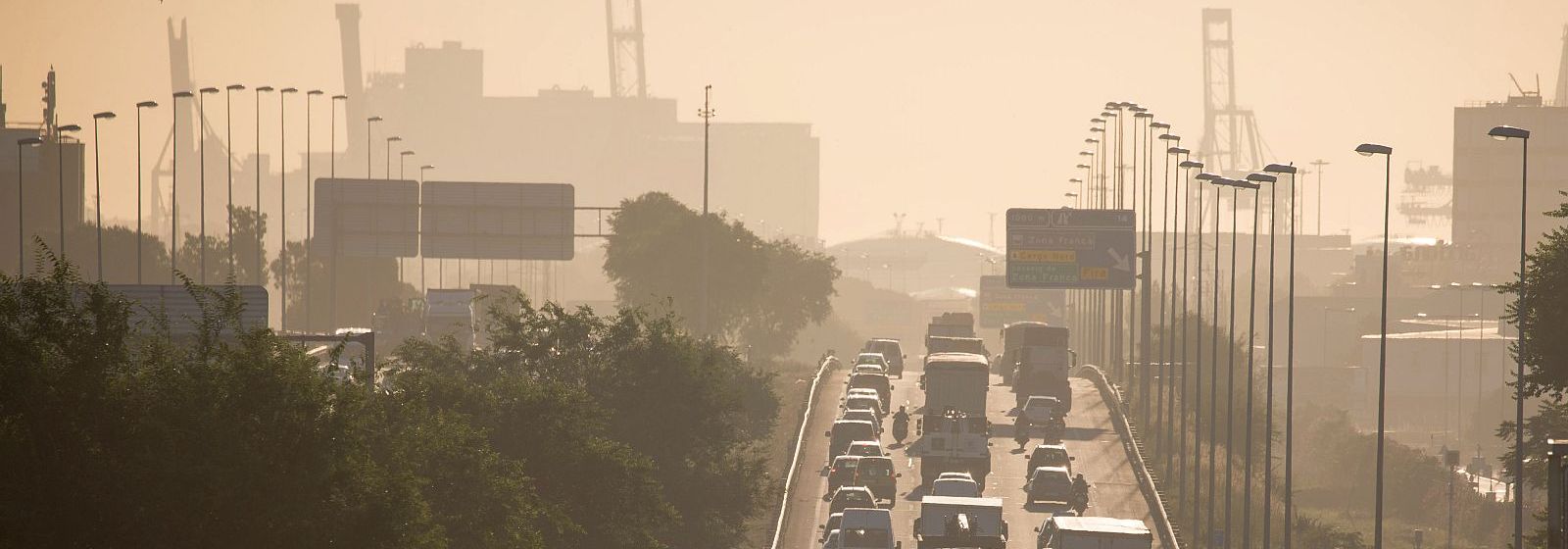El perquè de les mesures
- What are the reasons?
- How good is the air in the metropolitan area?
- What are its effects on health?
- What do the scientists say?
- Documents
Pollution and risks to health

What are the reasons?
Air pollution has a significant impact on the health of all the metropolitan area's citizens. While our air quality is slowly improving, air pollution remains the greatest threat to environmental health in the metropolitan area. According to the latest report from the European Environment Agency (EEA, 2018), atmospheric pollution is directly responsible for more than 500,000 premature deaths in Europe every year.
Up
How good is the air in the metropolitan area?
The municipalities making up the of Barcelona Metropolitan Area are subject to levels of pollution that exceed the maximum pollution thresholds for NO2 and PM10 established by the EU and the World Health Organization, and this constitutes a major threat to public health. The latest report on air quality in Catalonia in 2018 contains similar results to those for 2017, which exceeded the legal levels of NO2 pollution (Directive 2008/50/EC of the European Parliament and of the Council of 21 May 2008 on ambient air quality and cleaner air for Europe) and PM recommended by the WHO in the conurbation of Barcelona.
Exceeding the stipulated pollution thresholds has direct effects on people's health, which the scientific community has estimated at over 3,000 premature deaths per year in the metropolitan area. The influence of transport and mobility on air pollution has been confirmed as accounting for more than 50 % in the area of the special protection zone, but it rises to 70 or 80 % in the densest areas of the conurbation of Barcelona.
Exceeding the stipulated pollution thresholds has direct effects on people's health, which the scientific community has estimated at over 3,000 premature deaths per year in the metropolitan area. The influence of transport and mobility on air pollution has been confirmed as accounting for more than 50 % in the area of the special protection zone, but it rises to 70 or 80 % in the densest areas of the conurbation of Barcelona.
Up
What are its effects on health?
According to the European Environment Agency and the World Health Organization, pollution affects health in terms of: effect on the central nervous system (PM), asthma and reduced pulmonary function (PM), chronic obstructive pulmonary disease (PM), effects on the reproductive system (PM), effects on the liver, spleen and blood (NO2), lung cancer (NO2 and BaP) and cardiovascular effects (PM, SO3 and O3), among others.
Up
What do the scientists say?
High levels of air pollution thresholds have direct effects on people's health, which the scientific community has estimated at over 3,000 premature deaths per year in the metropolitan area. In fact, the most recent report on the state of health in Barcelona was presented last November, and it stated that lung cancer is now the premier cause of premature death among women. It also said that 70 % of the population was exposed to levels of NO2 higher than those recommended by WHO and the EU.
The evidence linking health and pollution has increased exponentially in recent years. In more specific terms, studies relate air pollution to various pathologies:
The evidence linking health and pollution has increased exponentially in recent years. In more specific terms, studies relate air pollution to various pathologies:
- A study led by the Barcelona Institute for Global Health (ISGlobal) says that expanding bicycle lane networks in cities could provide considerable benefits for health and the economy. More specifically, expanding bike lanes in European cities could prevent up to 10,000 premature deaths. In Barcelona, 248 premature deaths would be prevented every year if all the city's streets had a cycling infrastructure: Study on the expansion of bicycle lanes
- According to a study by the Hospital del Mar Medical Research Institute (IMIM), the Hospital del Mar and the Barcelona Institute for Global Health (ISGlobal), high levels of pollution increase the risk of an atherothrombotic stroke by 20 %: Conclusions of the study
- Experts in the field of cardiovascular diseases at the Vall d'Hebron Barcelona Hospital Campus and the CIBER Campus (CIBERCV) carried out a study that shows that on the days when air pollution levels are at their highest in the metropolitan area of Barcelona, there are more heart attacks: Pollution and heart attacks
- The Lancet Commission on pollution and health reported that pollution caused 23,987 deaths in Spain in 2015, which means 1 death out of every 17: full article
- A large-scale epidemiological study by the Barcelona Institute for Global Health (ISGlobal) and the American Cancer Society links some air pollutants with mortality due to kidney, bladder and colorectal cancer. The research tracked more than 600,000 adults for 22 years (from 1982 to 2004) and related mortality due to 29 types of cancer with residential exposure to three environmental pollutants: PM2.5, nitrogen dioxide (NO2) and ozone (O3): Cancer and air pollution
- The most recent study by ISGlobal in Barcelona shows that an increase in PM10 of 5 ?g/m3 in air breathed leads to the loss of almost one year of life (Environment International, 2016): Relationship between life expectancy and pollution
- The BREATHE Project found a negative effect on the development of children experiencing pollution in schools, and higher rates of hyperactivity and attention deficit among adolescents (Environment International, 2016): BREATHE projecte
- Air pollution is the cause of several cerebrovascular pathologies such as strokes and cardiovascular accidents (WHO), degenerative diseases (Journal of Alzheimer's Disease, 2015) and various mental health problems (JAMA Psychiatry, January 2013).
- There is plenty of evidence for its effects on the respiratory system, including lung cancer (WHO), pneumonia (WHO), various pulmonary disorders (Thorax, 2009, 64) and chronic lung obstructions (WHO).
- Various studies have been carried out on the impact on the reproductive system (CREAL-ISGlobal) and on coronary heart conditions (Circulation, 2010; WHO).
Up
Documents
L'OMS i la qualitat de l'aire
L'Agència Europea del Medi Ambient i la qualitat de l'aire
Directiva 2008/50/CE de 21 de maig de la Unió Europea sobre la qualitat de l'aire ambient i atmosfera més neta a Europa
Informe de l'Agència Europea del Medi Ambient sobre la qualitat de l'aire
La qualitat de l'aire a Catalunya: dèficits i recomanacions
La qualitat de l'aire a Catalunya. Anuari 2018
La qualitat de l'aire a Catalunya per al diòxid de nitrogen (NO2). Anuari 2018
L'Agència Europea del Medi Ambient i la qualitat de l'aire
Directiva 2008/50/CE de 21 de maig de la Unió Europea sobre la qualitat de l'aire ambient i atmosfera més neta a Europa
Informe de l'Agència Europea del Medi Ambient sobre la qualitat de l'aire
La qualitat de l'aire a Catalunya: dèficits i recomanacions
La qualitat de l'aire a Catalunya. Anuari 2018
La qualitat de l'aire a Catalunya per al diòxid de nitrogen (NO2). Anuari 2018
Up












































